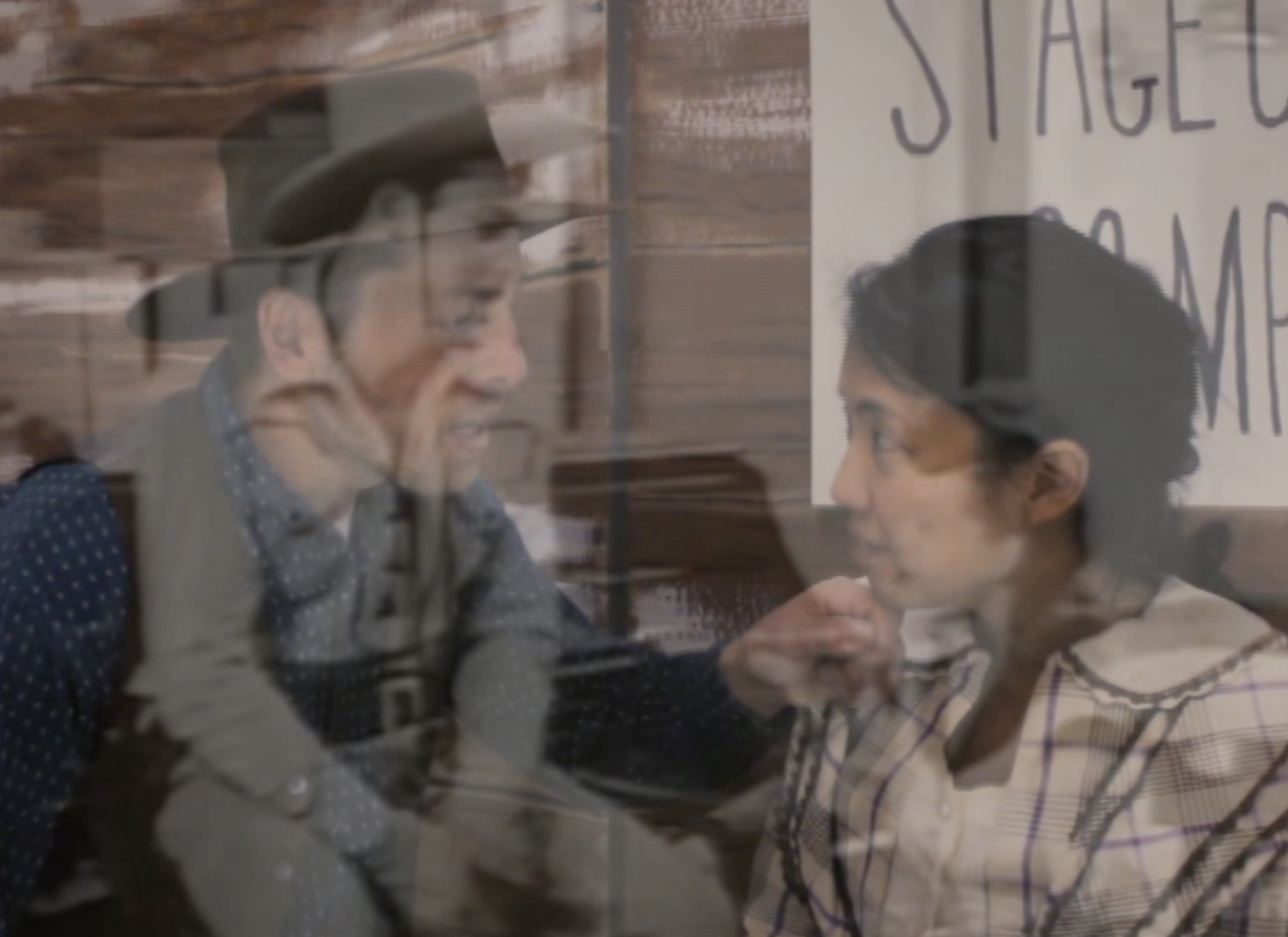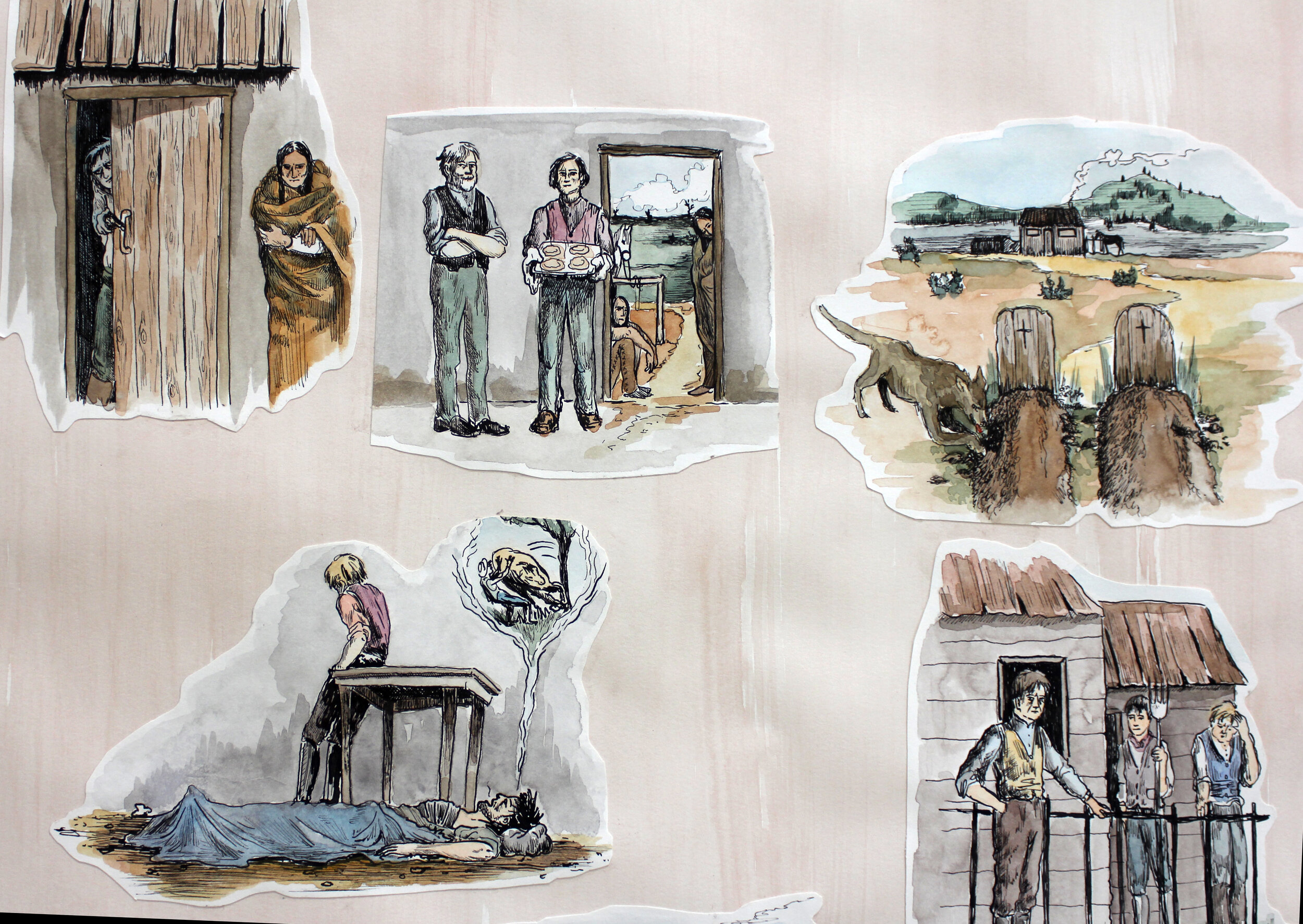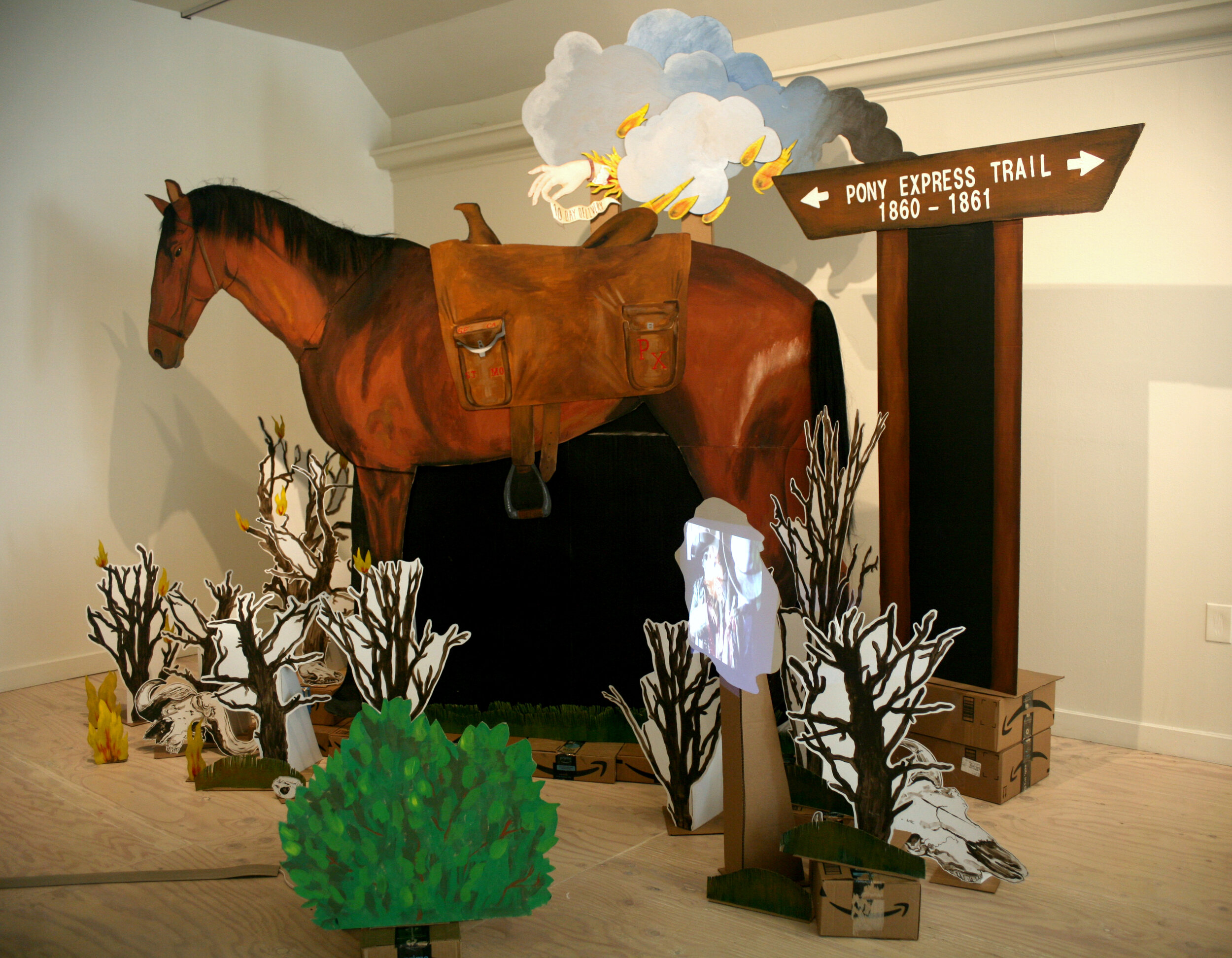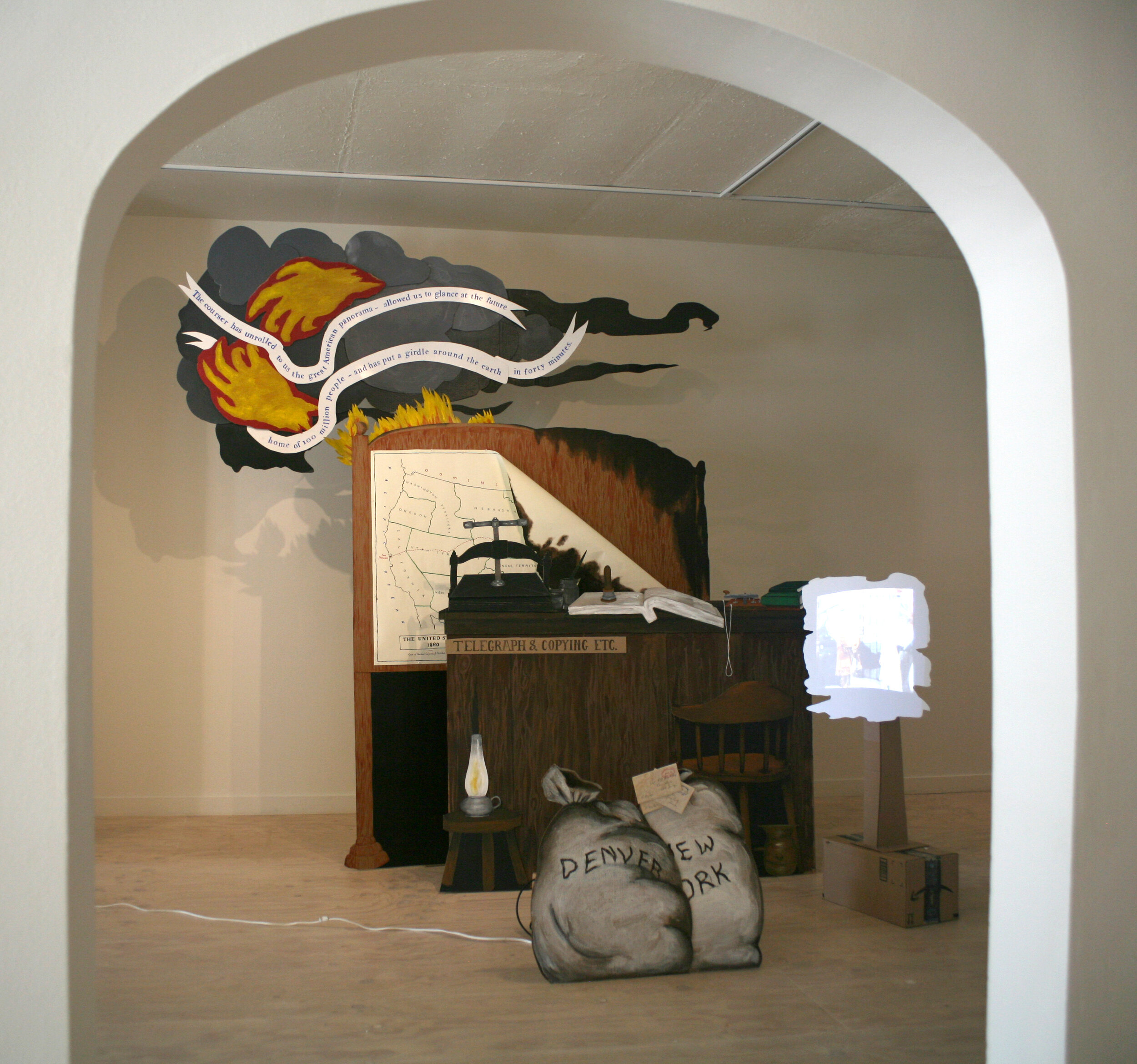Video stills (above and below) from the installation.
Starring Chris Bean, Ashley Harris, Cathy Lu, Aaron Rosenstreich, Laura Schadler, Steve Shearer, Leuwam Tesfai, Tanna Tucker, Whitney Watts.
See the online exhibit at Johansson Projects in Oakland, CA, below https://johanssonprojects.com/portfolio/dreams-and-diversions/
Pony Players’ Review is a video installation project featuring video re-enactments and a series of cardboard installation sets to look at the popular representation of the Pony Express, a 19th century messaging system.
The Pony Express was the fastest long distance messaging system in the US during the 18 months it was in service after which the transcontinental telegraph replaced the pony with its almost instantaneous information relay. Looking back at the Express can give the process of information relay a form through which to imagine what it means to send messages, and think about how the meaning of those messages is altered by the systems and devices we use to send them, and the stories we attach to those messengers and messaging systems.
The installations that make up this project are also about looking at the fallibility of myth and the power of images to cement specific (white, masculinist) stories as "official" national histories in the public imagination. Myths are not real, not factual - they are powerful fictions, but fictions none the less that can be re-written or over-written, and most certainly torn down. This project challenges romantic images of the Old West, revealing how the romantic image of the Express itself has been used to problematically promote myths of "progress" and “efficiency” through technology — myths that remain alive in tech industries and digital culture today.
“The Social Networks of a Letter, 1860, east” collage of paper, ink and gouache on paper. 52 x 58 inches
These collages draw on the diary of Sir. Richard Burton as he travelled from the east to the west coast of the US in 1860 by stagecoach. At the time, stagecoaches shared many relay/rest stations with the Pony Express, so looking at this diary allows us to imagine the social infrastructure of the transportation/communication route.
Installation view at Johansson Projects, Oakland, CA.
Horse sculpture install detail.
Installation at Johansson Projects, Oakland, CA.
Short video vignettes layer Hollywood films about the Express with re-enactments of those scenes, re-cast to offer a more diverse image in terms of ethnicity and gender and shot in my studio. The layers of moving images in these videos compete for visibility on screen, representing the struggle of those images to achieve visibility.
“The Social Networks of a Letter, 1860, west” collage of paper, ink and gouache on paper. 52 x 58 inches
These drawings, rather than visualizing the heroics of pony riders, instead emphasize the people (many of them immigrants and indigenous women and children) who maintained the relay stations of the Express, thus ensuring that communication could efficiently continue across 2000 miles.










